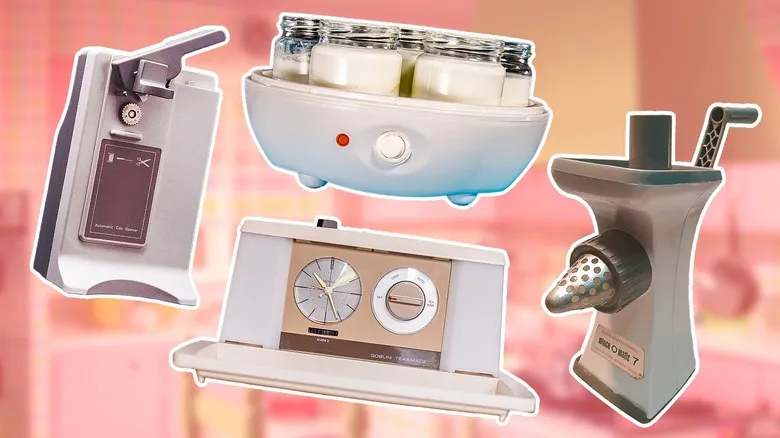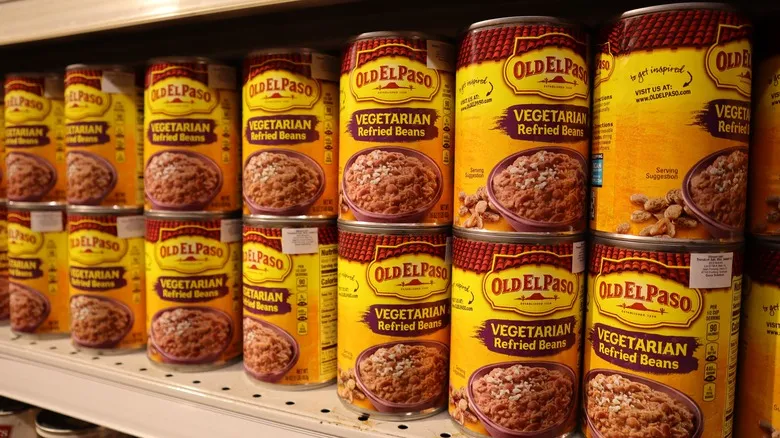Electric knives

If you've ever found slicing meat with a knife to be exhausting or monotonous, there's good news: an electric alternative is available. This innovation originated in 1964 when the first electric carving knife was patented. The initial model was driven by an electric motor and featured two moving blades. However, it wasn't until well-known brands like General Electric and Black & Decker introduced their own electric knives that the idea gained traction. Thanks to their marketing efforts, the electric knife quickly became a sought-after item among American households. By 1971, around one in three families in the U.S. owned one.
Despite its advantages, the electric knife had its downsides. It often tore the meat, leading to shredded and uneven cuts. Additionally, its design was not very hygienic—grease and meat residue could accumulate in the handle and between the blades, making cleaning a hassle. Perhaps most frustrating of all, the knife's motor was extremely loud, alerting everyone in the house (and even the neighbors) about what was for dinner. It's no wonder that the electric knife's popularity declined over time. Nowadays, home cooks typically reserve it for carving the Thanksgiving turkey.
Peanut butter machine

As its name implies, the peanut butter machine allows you to create your own delightfully creamy nut butter right at home. Was it unnecessary? Households in the 1970s certainly didn’t think so. The very first peanut butter machine was actually a modified meat grinder, invented in the 19th century by Joseph Lambert, who worked at John Harvey Kellogg's health sanatorium. By the 1970s, electric versions were emerging on the market, appealing not just to restaurants and food production companies, but also to consumers eager to add this appliance to their growing collection of kitchen gadgets.
One popular model from Salton featured a dial that enabled users to adjust the consistency of their peanut butter. Fans could choose their desired texture, whether smooth, chunky, or somewhere in between. Operating the machine was incredibly straightforward—just pour in your nuts at the top and watch as perfectly spreadable peanut butter flows out of the spout. While it was effective for making peanut butter, it’s easy to understand why this device may have lost popularity among the general public. Its specialized function and bulky design likely made it a must-have only for the most passionate peanut butter aficionados.
Teasmade

This uniquely British invention is an alarm clock that also boils and brews tea. Born from a desire for home automation, it’s the perfect gadget for anyone who feels too hurried in the morning to prepare a proper cup of tea. While the teasmade peaked in popularity during the 1960s and 1970s, its origins trace back to the 1890s, when it operated on gas and an open flame. In the 1930s, these somewhat hazardous devices were phased out with the advent of electricity in British homes, paving the way for the modern teasmade we recognize today.
One of the most well-known models, the Goblin Teasmade, functioned by boiling water and transferring it to a teapot. This would trigger the alarm clock and illuminate a built-in lamp. Some of the earliest versions featured clock faces that glowed in the dark due to radium paint, although this was eventually discontinued. One of the most iconic versions of the Goblin Teasmade was introduced in the 1960s, showcasing a chic faux-art deco design. The device remained highly sought after throughout the 1970s but gradually lost popularity with the rise of espresso machines.
Yogurt maker
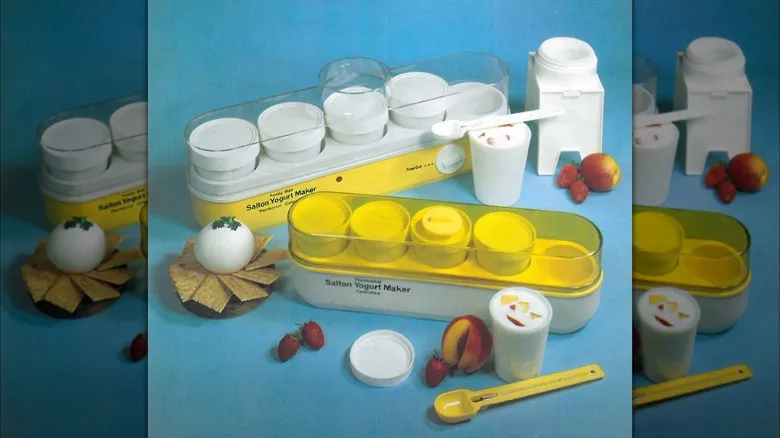
During the 1960s and 1970s, there was a growing awareness of health among the public. In the United States, this period witnessed a rising interest in organic and unprocessed foods, along with a surge in trendy diets. Influenced by European dietary practices, Americans began to consume yogurt in greater quantities than ever before. In line with this trend, yogurt makers became increasingly popular in the early 1970s, allowing consumers to easily prepare yogurt at home. At a time when yogurt was not widely available in grocery stores, these electric appliances enabled enthusiasts to create a week's worth of yogurt.
The Salton Yogurt Maker emerged as one of the most prevalent models found in American households. This appliance featured straightforward instructions and required just two ingredients: milk and yogurt starter or culture. It remained a favorite throughout the 1990s but gradually fell out of favor as grocery stores began to stock a wider variety of yogurt brands. With so many options readily available, the public's interest in making their own yogurt diminished.
The Hot Dogger
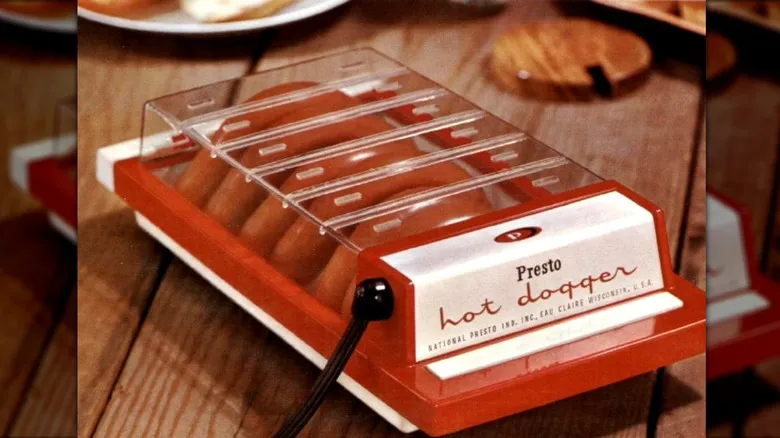
In the 1960s and 1970s, the houseware and appliance brand Presto introduced several popular gadgets, including the memorable Hot Dogger. This appliance made some bold promises—it claimed to cook six hot dogs in just 60 seconds. To use it, you simply had to skewer the hot dogs onto its somewhat intimidating spikes and plug it into an outlet. With no on/off switch, you had to unplug the device once the minute was up.
While the concept of cooking hot dogs by electrifying them may seem unusual (and a bit dangerous), the Hot Dogger delivered on its promises. However, its functionality was quite limited, as it was designed exclusively for hot dogs and could not accommodate any other foods. Additionally, the absence of buttons or an automatic shut-off feature made it potentially risky to use. After all, when preparing a quick meal, the last thing you want is to worry about the possibility of electrocution. Perhaps it’s for the best that the Hot Dogger remained a product of the 1970s, now serving as a quirky relic of a past era.
The Mince-O-Matic

Today, K-tel is primarily recognized as a record label, but its origins lie in the kitchenware and appliance sector. During the 1970s and 1980s, it was nearly impossible to watch television without encountering one of K-tel's infomercials, promoting intriguing and innovative gadgets like the Veg-O-Matic, Chop-O-Matic, and Mince-O-Matic. Philip Kives, the founder of the company, is credited with popularizing the now-famous phrase, "But wait, there's more!" in his product advertisements.
Although modern versions of K-tel's most popular items can still be found on store shelves today, the idea of a specialized mincing machine has largely vanished from the kitchens of casual home cooks. The Mince-O-Matic required some manual effort to use—it operated by turning a hand-crank, although it did boast a sturdy vacuum base to aid in its operation. Advertisements claimed that the appliance could mince a variety of foods, including eggs, meat, carrots, onions, and potatoes. They even showcased the machine's ability to crush ice finely enough for snow cones. However, it’s clear that these appliances failed to persuade consumers of their lasting worth, as K-tel filed for Chapter 11 bankruptcy in 1984.
Foley Fork
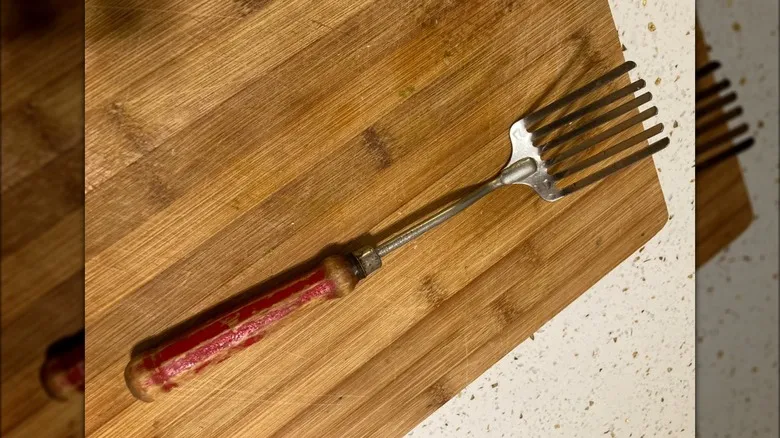
Unlike many gadgets on this list, the Foley Fork boasts a wide range of uses. It can mash guacamole and potatoes, beat eggs, and mix, stir, and whisk nearly anything else. Bakers also appreciate it for incorporating fats like butter or lard into flour. What distinguishes the Foley Fork—often referred to as the Granny Fork today—from other popular mid-century tools is its straightforward and effective design. This large metal utensil features six uneven tines, making it a practical kitchen staple. Among its fans was none other than Julia Child, who showcased it on her show, "The French Chef."
Unfortunately for enthusiasts of this blending tool, Foley Manufacturing Co., the creator of the fork, merged with Belsaw Machinery in 1982, effectively ending Foley's line of kitchen tools. While several replicas are now offered by contemporary kitchenware brands, the tool has lost much of its former popularity and recognition. If any long-forgotten kitchen implement deserves a revival, it’s the Foley Fork, thanks to its remarkable versatility.
The electric can opener and knife sharpener

In the 1970s, despite the introduction of numerous new appliances, counter space remained scarce. This limitation may have contributed to the push for multitasking gadgets. One notable invention was the combination electric can opener and knife sharpener. This dual-purpose appliance promised to effortlessly open cans and sharpen knives without requiring any manual effort. While electric can openers had existed since the 1930s, it wasn't until 1956 that Udico introduced a free-standing model that also featured knife sharpening capabilities.
Other well-known brands, such as General Electric and Dazey, also produced versions of this appliance in the iconic avocado green, a hallmark color of the '70s. Although the gadget enjoyed popularity for several years, it was often bulky and took up considerable counter space. Additionally, it frequently fell short of user expectations, particularly in its knife sharpening performance. Today, while can openers and knife sharpeners still find a place in many American kitchens, they have thankfully evolved into separate devices.
Electric ice crusher
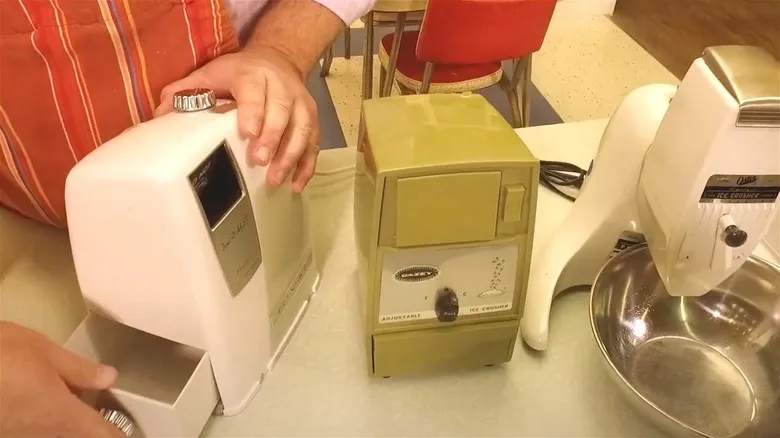
Before the advent of electric ice crushers in the 1960s, ice crushing machines relied on manual cranking to break the ice. Fortunately, the introduction of electricity revolutionized the process, allowing anyone to enjoy crushed ice in their drinks at the touch of a button. Many of these electric models even included dials for selecting between fine and coarse ice textures, elevating the craft of cocktail preparation.
However, a significant limitation of these appliances was their singular function—they could only crush ice. Users still needed to create ice using a tray in the freezer or a separate ice maker. Additionally, refrigerator manufacturers began integrating more advanced technology into their products. Nowadays, many refrigerators can produce, dispense, and crush ice all in one unit. While a small but passionate group of collectors still appreciates and uses vintage ice crushers, the peak popularity of these devices has mostly faded.
Fondue pots
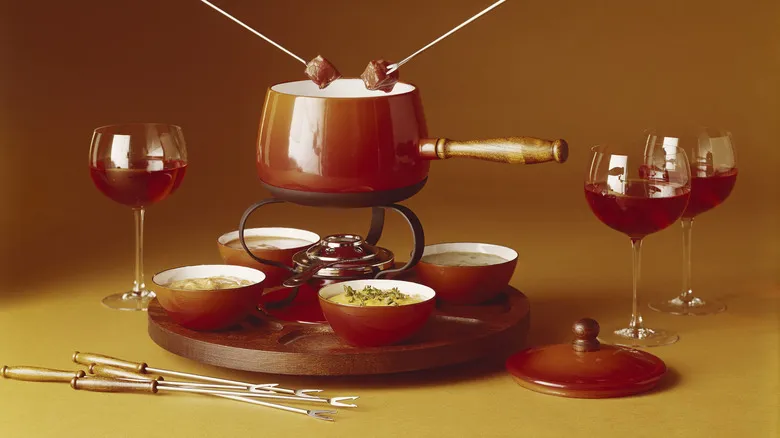
Fondue was arguably the most iconic culinary trend from half a century ago. Although it is often linked to Swiss cuisine, fondue actually hails from Savoie, a region in the French Alps. This dish typically features a pot filled with melted cheese, chocolate, oil, or broth. Diners use long forks to skewer bite-sized pieces of bread, meat, vegetables, or virtually any other food (the possibilities are truly endless) and dip them into the pot's contents. Originally a dish created by peasants to endure the harsh, cold winters, fondue won over the hearts of Americans when it was introduced in the 1960s.
Fondue pots became essential kitchen items in American households well into the 1970s. These vibrant pots were usually electric, although some were heated with candles or alcohol burners. Preparing a fondue meal was relatively straightforward and affordable, making it a favored option for themed gatherings. By the mid-1970s, the fondue phenomenon began to wane, but it experienced a revival in the 1990s and early 2000s. Today, fondue pots are no longer a staple in most homes, but they may be poised for another comeback.
Decorated kitchenware
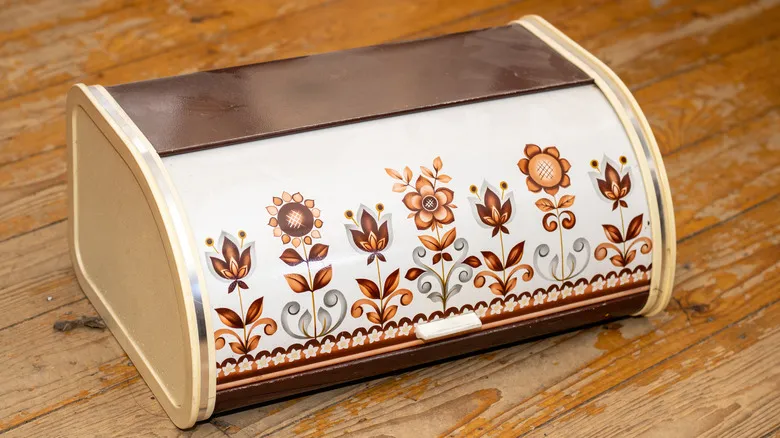
During the 1970s, vibrant patterns and bold decor were all the rage, transforming every area of the home, including the kitchen. You might recall the patterned linoleum floors and lively wallpapers, but this love for maximalism also influenced kitchenware. Cookware, canisters, dishes, and even appliances were embellished with painted designs, often showcasing nature-inspired motifs such as fruits, vegetables, flowers, and mushrooms.
In the '70s and '80s, Sears introduced over 250 kitchen products featuring the mushroom theme alone. These items ranged from themed pitchers and tea kettles to cookie jars, as well as more surprising pieces like bacon racks, cutting boards, and can openers, all adorned with mushroom designs. However, by the 2010s, decorated kitchenware had fallen out of favor, making way for minimalism as the dominant style. Today, though, some enthusiasts of kitsch actively hunt for these vintage treasures in thrift stores and estate sales, aiming to bring a touch of '70s charm back into their homes. Despite the efforts of these collectors and the revival of maximalism in the 2020s, it appears that nature-themed kitchenware has largely lost its allure among the average consumer.
Recommended

What Are Gyoza? Japan's Favorite Dumplings, Explained
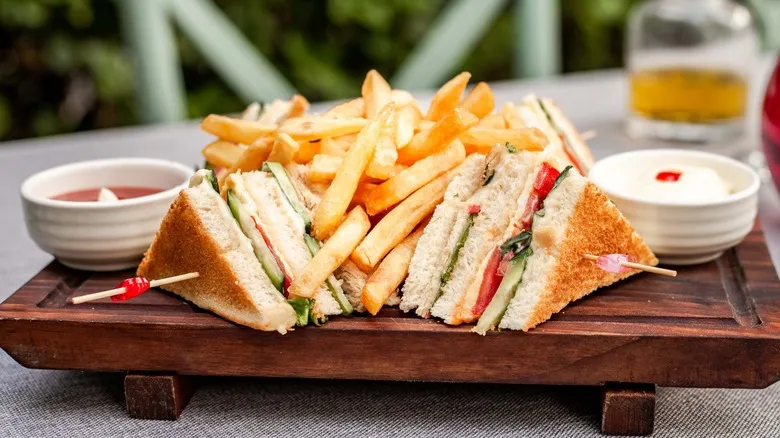
The Club Sandwich Was Created In An Exclusive Club, But Nobody's Sure Which One

The Fascinating History Of Airplane Food

13 Meats People Used To Eat, But Are Now Illegal In The US
Next up

